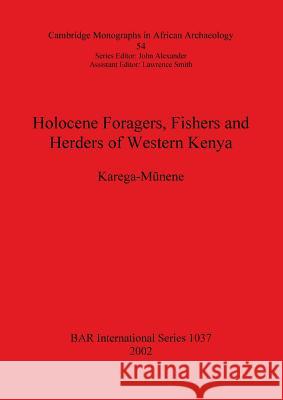Holocene Foragers, Fishers and Herders of Western Kenya » książka
Holocene Foragers, Fishers and Herders of Western Kenya
ISBN-13: 9781841714172 / Angielski / Miękka / 2002 / 171 str.
Using evidence from the site of Gogo Falls in the Lake Victoria basin, Karega-Munene is able to reach more general conclusions about the nature of subsistence activities in East Africa as a whole between the Neolithic and Iron Age. This report discusses artefactual and faunal evidence from the site, its geographical, enviromental and climatic setting, and patterns of land use, human settlement and the exploitation of animal and plant resources.
The problem of subsistence has received little attention in East African archaeology. Various models of human subsistence strategies have been constructed and a linear chronology from a hunting-gathering economy to pastoralism and agriculture has been the dominant conceptual framework for the research in the last few decades. In this monograph it is argued that this overarch model masks the subtle and perhaps overlapping true nature of a mosaic of adaptation to the local resource base. A broad approach, involving examination of the transition from food collecting to food production as a process rather than as a single event is adopted. The approach also involves the examination of several causes of culture change in the region. It is anticipated that this approach will enable us to better understand the subsistence strategies of the human groups who occupied the Gogo Falls site in the Lake Victoria basin during the Neolithic and Iron Age periods.











